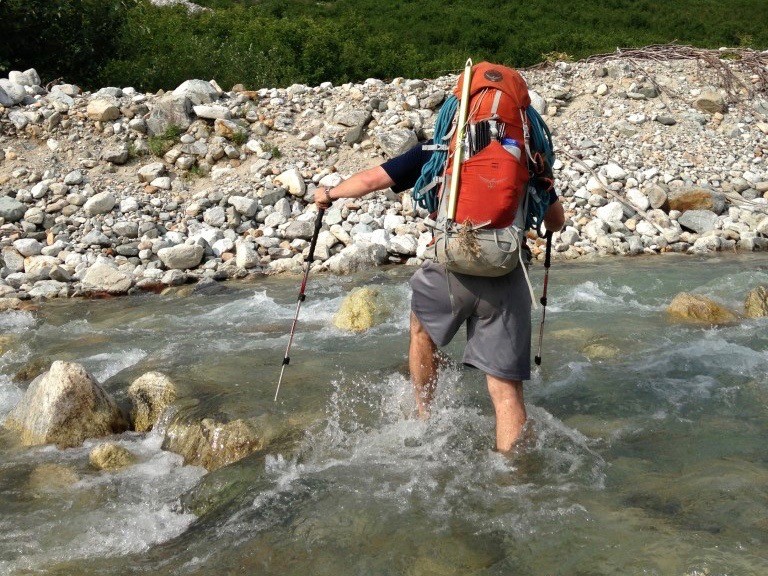We tested all our trekking poles in a variety of uses, from light-duty trail runs to steep approaches on alpine climbs and from short day hikes to long-distance hiking on the 210-mile John Muir Trail. In each situation, we noted how the poles performed in a variety of metrics.
Comfort
To assess comfort, we gave these poles out to a variety of testers of all heights and weights, as well as those with hands of all sizes. They used them in a variety of trail conditions, from soft dirt to firm snow to awkward talus. We noted the comfort of the grip shape and materials over time, as well as how the materials absorbed shock from the trail. We even hiked with them side-by-side, using different poles in each hand to determine which were more comfortable.
Weight
On the trails, we noted how the weight of each pole felt while hiking. Lifting poles with each step is generally more efficient than hiking without poles due to the load taken off the legs, but heavy poles can make the benefits less obvious. We noted how cumbersome each pole was to hike with. Then, we weighed each pair (with its smallest baskets) to the tenth of an ounce.
Versatility
Over the course of our testing, we made a note of the activities at which each pole excelled. Often using poles outside of their intended environment, we came uncovered a good idea about the limits of each pair. On one side of the spectrum are poles that are only suitable for light hikes and walks, and on the other side are poles that are lightweight and collapsible for alpine climbing and weight-sensitive missions. We also noted the various tip and basket attachments included with each model to help add versatility across a wide range of trail conditions.
Locking and Adjustability
Each pair of poles underwent a rigorous test to make sure the locking mechanisms were solid and that the adjustment length never slipped. We also noted how easy the different locking mechanisms were to operate and secure in the field without any additional tools. We leaned on them during sketchy stream crossings where stability was mandatory, and a collapsed pole would mean an icy bath or even worse.
Packed Size
In addition to using the poles in our hands on the trail, we also used these poles to approach climbs and while on technical sections of backpacking routes. We assessed how each pole folded or collapsed into a smaller size to disappear cleanly onto the outside of a pack or into a suitcase. We then measured each pair's shortest packed length.
Construction Quality
After extended use on the trails, climbs, and slopes of the Sierra, Rockies, and Tetons, we checked each pole for signs of cracking, chipping, bending, and grip wear. In some cases, we broke poles while testing their limits. We made a note of the materials used in the construction of each pole's grip, shaft, locking mechanism, and tip and used our experience with each material to judge the reliability of each product.









